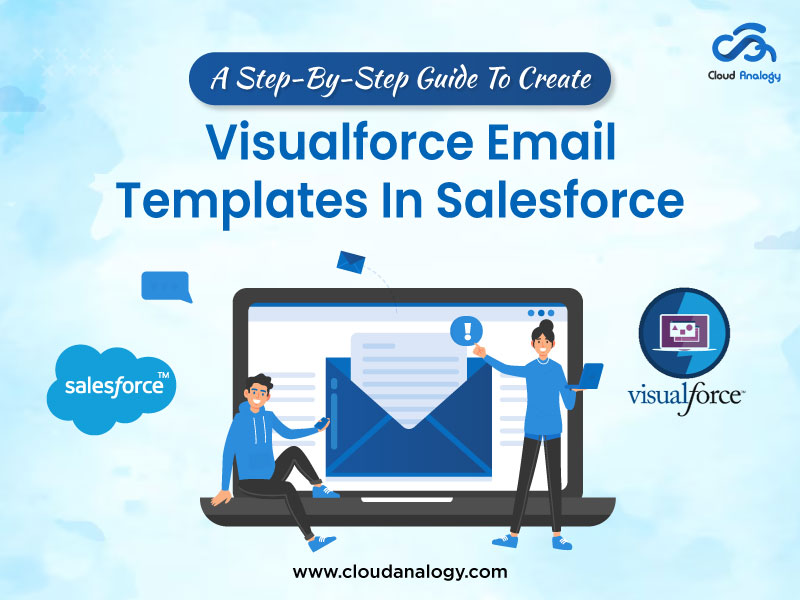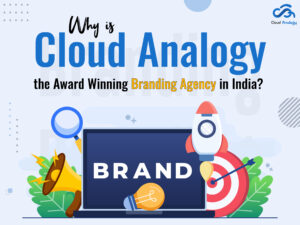Sharing is caring!
Did you know that personalized email campaigns can significantly increase engagement rates by up to 29% and drive up to 6 times higher revenue per email than non-personalized emails? This highlights the importance of customization and relevance in email marketing. When it comes to Salesforce, leveraging advanced features like Visualforce email templates can significantly enhance your communication strategy.
Visualforce allows you to craft highly customizable and visually appealing email templates to help you stand out in your customers’ inboxes. If you’re looking to send personalized emails that include tables of related child records from a parent object, Visualforce email templates offer a robust solution. Unlike standard email templates, Visualforce templates provide the flexibility to iterate through ‘n’ numbers of records, ensuring that your emails are detailed and tailored to your needs.
Do you wish to transform your business into a powerhouse of efficiency, productivity, & growth? Our Salesforce consulting services are here to make that happen! We provide personalized solutions that streamline your operations, enhance customer interactions, and drive success. Our expert team will guide you through seamless Salesforce setup, maintenance, integration and implementation, ensuring you get the most out of Salesforce. Hire Cloud Analogy, the best Salesforce consulting partner today and turn your business vision a satisfying reality.
In this blog, we’ll provide a step-by-step guide to creating Visualforce email templates in Salesforce, ensuring you can harness this framework’s full power to drive engagement and results.
Why Use A Visualforce Email Template?
In Salesforce, you have several options for email templates, including Text, HTML, and Visualforce. Each serves a different purpose, but when it comes to including dynamic content and handling multiple records, Visualforce stands out. Here’s why:
Dynamic Content Handling: Visualforce templates allow you to include dynamic content, such as child records related to a parent object. If you need to iterate through multiple child records and display them in an email, Visualforce is your go-to framework for building customied user interfaces. HTML and Text templates lack the capability to handle such complex data structures.
Iterate Through Records: With Visualforce, you can utilize the <apex: repeat> tag to iterate through a list of records, enabling you to include an ‘n’ number of child records in your email. This functionality is crucial for businesses that must provide detailed information in their communications.
Custom Styling: Visualforce provides greater control over the styling of your email templates. You can use custom CSS to design emails that align seamlessly with your branding and marketing strategies.
Advanced Functionality: Visualforce allows for more complex logic and formatting than HTML or Text templates. Based on the data, you can include conditional content, perform calculations, and apply specific formatting rules.
Benefits of Visualforce Email Templates
Consistency: Maintain brand consistency across all customer communications with customizable design elements.
Enhanced Engagement: Personalize content to better connect with your audience & increase open and click-through rates.
Flexibility: Adapt your templates for various use cases, from promotional campaigns to transactional notifications.
Steps To Create A Visualforce Email Template For Including N Numbers Of Records?
Step 1: Open your Salesforce Org.
Step 2: Go to Setup and search for ‘Email Template‘ in the Quick Find box. Select ‘Classic Email Templates’.
Fig 1
Step 3: Select any folder and click on ‘New Template’.
Fig 2
Step 4: Select ‘Visualforce‘ and click on ‘Next.’
Fig 3
Step 5: Enter all of the mandatory fields as the following:
| Available For Use | Select this checkbox |
| Email Template Name | Give a Suitable Name for your Template |
| Template Unique Name | Will Automatically Populate |
| Email Subject | Give a Suitable Subject for your Email |
| Recipient Type Dropbox List | Select the Recipient Type to whom the email will be sent. |
Note: The Template Unique Name is essential because it must be unique for your org and help prevent naming conflicts in packaged installations. You can also query the template in SOQL using this Template’s Unique Name.
Step 6: Save the details. Now Click on ‘Edit Template’.
Fig 4
Step 7. Copy the following script and Paste it inside the ‘Email Content Tab.’
<messaging:emailTemplate subject=”Enter your Email Subject Here” recipientType=”Enter recipient type here” relatedToType=”Parent Object Name” >
<messaging:htmlEmailBody >
<html>
<body>
<p>Dear {!recipient.name},</p>
<p>Can Add More Content Here</p>
<p/>
<p>Child records Table related to the Parent Record</p>
<table border=”1″ >
<tr>
<th>Column Header 1 </th><th>Column Header 2</th>
<th>Column Header 3</th><th>Column Header……n</th>
</tr>
<apex:repeat var=”cx” value=”{! relatedTo.ChildObjectAPInameInPural }”> <!—standard child object (Contact) example – Contacts, Custom child object (Payment) example – Payments__r –>
<tr>
<td> {!cx.CloumnHeader1APIname}</td>
<td>{!cx.CloumnHeader2APIname }</td>
<td>{!cx.CloumnHeader3APIname }</td>
<td>{!cx.CloumnHeader4APIname }</td>
<td>{!cx.CloumnHeader5APIname }</td>
<td>{!cx.CloumnHeader6APIname }</td>
<td>{!cx.CloumnHeader…..nAPIname }</td>
</tr>
</apex:repeat>
</table>
<p>Thanks</p>
</body>
</html>
</messaging:htmlEmailBody>
</messaging:emailTemplate>
Step 8: Replace the content in red color with the suitable content.
Example –
In this Email Template, we include all available contacts related to the particular Account Object.
Fig 5
Step 9: Click on ‘Save’. Now, the preview should look like this.
Fig 6
Step 10: Send a temporary Email by clicking on ‘Send Test and Verify Merge Fields’ for testing.
Fig 7
Step 11: Enter the following details.
| Recipient Record | Select the recipient by search option |
| Related To Record | Select the related to (Parent Record) by the search option |
| Send Email Preview to | Check the checkbox.Enter your email address (to get the preview email) |
Step 12: Click on Ok. The preview email will be sent to your email ID.
Now, this template can be used in the Batch class, Process Builder, Flow, etc.
Conclusion
Visualforce email templates in Salesforce offer a powerful way to create targeted and personalized communications. By leveraging Visualforce’s flexibility, you can include dynamic data and multiple records, customize email styling, and apply complex logic. Unlike standard HTML or Text templates, Visualforce provides the advanced capabilities needed for sophisticated email marketing and customer engagement. Whether you’re sending out detailed reports, invoices, or notifications, Visualforce templates provide the flexibility needed to meet complex communication requirements.
Incorporating Visualforce email templates into your Salesforce strategy ensures that your emails are visually appealing & rich in content, tailored to your audience, and capable of performing advanced data operations. Visualforce is a valuable framework for any organization looking to enhance email communication and drive better engagement with their recipients.
For more guidance on making the most out of Salesforce, Zoho, & HubSpot CRM, or if you need personalized help, please contact our Cloud Analogy team. We specialize in high-quality CRM services & Salesforce consulting services that drive business success and streamline your CRM processes. Contact us to learn more about comprehensive, affordable packages and tailored solutions that fit your budget and elevate your business. Our expert team at Cloud Analogy is here to guide you every step of the way. Hire the result-oriented CRM services today!

Akshay Dhiman
Chief Technical Officer
Akshay Dhiman, the CTO of Cloud Analogy, has been a standout and successful Salesforce Platform Developer for years. He has a rich experience in Salesforce Integration, JavaScript, APEX, VisualForce, Force.com Sites, Batch Processing, Lightning, PHP, C++, Java, NodeJs, ReactJs, Angular 8, GraphQL, React Native, Web Technology, and jQuery.Hire the best Salesforce Development Company. Choose certified Salesforce Developers from Cloud Analogy now.










